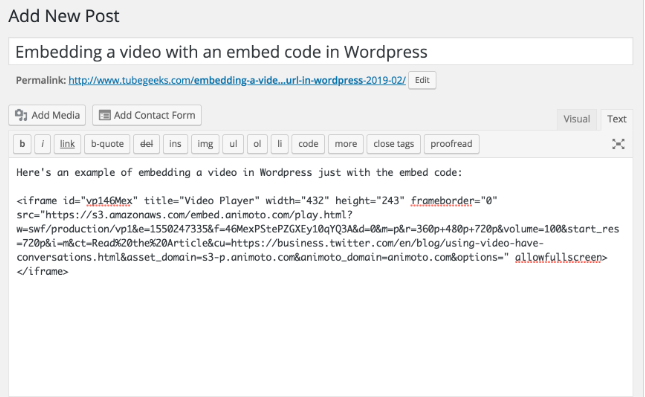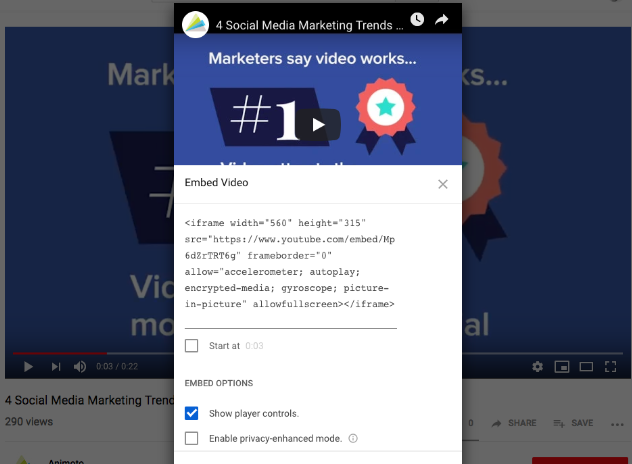In today’s digital world, video content is an effective way to engage website users. Whether you’re a content creator, marketer, or company owner, integrating videos on your website may greatly improve user experience and engagement. This. Step by step how to download mp4 to engage website, tutorial will help you through the process of obtaining MP4 movies and using them to successfully engage your audience.

Are you having trouble embedding MP4 films on your website? Look no further! In this detailed article, we’ll walk about how to download mp4 to engage website steps for embedding MP4 films on your website. Whether you’re beginner or an experienced web developer, our step-by-step instructions will guide you through the process of easily embedding and engaging MP4 movies into your website.
Say goodbye to annoying video playback problems and welcome to exciting, interactive content that improves user experience and search engine results. Prepare to expand your website’s multimedia capabilities and wow your audience with simple MP4 video embedding.
Why Use MP4 Videos?
MP4 is one of the most popular video formats since it works with a variety of devices and platforms. It provides high-quality video and audio compression, making it suitable for streaming and downloading. By engaging MP4 movies to your website, you can:
- Enhance User Experience: Videos can make your content more dynamic and engaging.
- Increase Dwell Time: Visitors are likely to spend more time on your site if they find interesting video content.
- Boost SEO: Search engines favor websites with rich media content, which can improve your search rankings.
Universal Compatibility:
MP4 is one of the most extensively used video formats on all platforms and browsers. This guarantees that your movies play well for all users, regardless of device or operating system.
High-Quality with Small File Size:
MP4 movies provide superb video quality while being relatively compact in file size. This balance contributes to faster loading speeds, which is essential for keeping people on your site and enhancing your SEO rankings.
Efficient Compression:
MP4 supports both noisy and free compression, allowing you to optimize videos for quicker loading times while maintaining quality. This flexibility makes it suited for a wide range of applications, from high-definition movies to fast-loading web clips.
Enhanced User Engagement:
Videos are very entertaining and can better attract people’ attention than text or photos alone. By adding MP4 videos, you may enhance the amount of time people spend on your website, which benefits your SEO.
SEO Benefits:
Websites with rich media content are more likely to rank well in search engines. Embedding MP4 movies can help your website’s SEO by boosting dwell time and decreasing bounce rates. Videos may also be optimized with informative titles, tags, and transcripts to improve their search engine presence.
Flexibility:
MP4 is a flexible file format that supports video, audio, subtitles, and still photos. This makes it suitable for a wide range of content formats, including lessons and product demos, promotional films, and download mp4 to engage website
Steps to Download MP4 Videos
Identify the Source:
Determine where the video is hosted. Common platforms include YouTube, Vimeo, and social media sites.
Choose a Download Method:
There are several ways to download MP4 videos, including online downloaders, browser extensions, and software tools.
- Online Downloaders: Websites like SaveFrom.net and ClipConverter.cc and Y2mate popular websites allow to download any video from any website allow you to download videos by simply pasting the URL.
- Browser Extensions: Extensions like Video DownloadHelper for Firefox and Chrome can help you download videos directly from your browser.
- Software Tools: Programs like 4K Video Downloader and Cisdem Video Converter offer advanced features like batch downloading and format conversion.
Download the Video:
Follow the instructions provided by your chosen method to download the video in MP4 format.
Optimize the Video:
Before embedding the video on your website, consider optimizing it for web use. This includes compressing the file size without losing quality and ensuring it is mobile-friendly to download mp4 to engage website
Embedding MP4 Videos on Your Website

Embedding MP4 movies on your website may greatly increase user engagement and SEO. Videos may make content seem more engaging, keep their people on your website longer, and even improve your search engine results. This is a complete tutorial on embedding MP4 videos on your website.
Embedding MP4 videos on your website enhances user engagement, boosts conversions, and improves SEO rankings. Here are some benefits:
- Increased user engagement
- Improved website accessibility
- Enhanced brand credibility
- Better search engine rankings
Preparing Your MP4 File
Before embedding your MP4 video, ensure:
- File format: MP4 (MPEG-4)
- Resolution: 720p or 1080p
- File size: Optimized for web use
- Encoding: H.264 or VP9
Methods to Embed MP4 Videos
There are several ways to embed MP4 videos on your website. In this article, we’ll cover the most common methods: using HTML5 <video> tags and embedding videos from platforms like YouTube.
There are three primary methods to embed MP4 videos:
- HTML5 Video Player: Use the HTML5 video tag to embed MP4 videos.
- Video Embed Plugins: Utilize plugins like Video.js or Plyr.
- Third-Party Video Hosting: Host videos on platforms like YouTube, Vimeo, or Insta Reels.
Method 1: Using HTML5 <video> Tags

HTML5 provides a straightforward way to embed videos directly into your web pages. Here’s how you can do it:
- Prepare Your Video File: Ensure your MP4 video is optimized for web use. Compress the file if necessary to reduce loading times.
- Upload the Video to Your Server: Place the video file in a directory on your web server.
- Embed the Video Using HTML5:
html
<video width=”640″ height=”360″ controls>
<source src=”path/to/your-video.mp4″ type=”video/mp4″>
Your browser does not support the video tag.
</video>Width and Height: Adjust these attributes to fit your website’s layout.
Controls: This attribute adds play, pause, and volume controls to the video player.
- Customize Video Attributes:
Autoplay: Add autoplay to start the video automatically (use with caution as it can be blocked by browsers).
Loop: Add loop to make the video play continuously.
Muted: Add muted to start the video without sound.
Method 2: Using Video Embed Plugins
Popular video embed plugins include:
These plugins offer:
- Customizable players
- Responsive design
- Analytics integration
Method 3: Embedding Videos from YouTube

If you prefer to host your videos on a platform like YouTube, you can easily embed them on your website. Here’s how:
- Upload Your Video to YouTube: Follow YouTube’s guidelines to upload your video.
- Get the Embed Code:
– Go to your video on YouTube.
– Click on the “Share” button below the video.
– Select “Embed” and copy the provided HTML code. - Insert the Embed Code into Your Web Page:
html
<iframe width=”560″ height=”315″ src=”https://www.youtube.com/embed/YourVideoID” frameborder=”0″ allowfullscreen></iframe>Width and Height: Adjust these values to fit your design.
Allowfullscreen: This attribute allows the video to be viewed in full-screen mode.
Method 4: Using Third-Party Video Hosting
Third-party video hosting platforms offer:
- Easy uploading and embedding
- Customizable players
- Analytics and tracking
Troubleshooting Common Issues
Common issues and solutions:
- Video not playing: Check file format and encoding.
- Video buffering: Optimize file size and hosting.
- Video not displaying: Verify HTML code and browser compatibility.
Best Practices for embedding Videos to Engage Visitors
1. Optimize Video Files:
Compress your videos to ensure fast loading times without compromising quality.
2. Responsive Design:
Ensure your video player is responsive to different screen sizes. Use CSS to make the video adapt to various devices.
3. SEO Optimization:
- Descriptive Titles and Tags: Use relevant keywords in your video titles and tags.
- Transcripts and Captions: Provide transcripts and captions to make your videos accessible and improve SEO.
- Schema Markup: Use schema.org video markup to help search engines understand your video content.
Download mp4 to engage website can greatly enhance user engagement and improve your SEO. Whether you choose to use HTML5 <video> tags or embed videos from platforms like YouTube, following these steps will ensure your videos are seamlessly integrated and optimized for the best user experience.
By incorporating videos, you’re not only making your content more engaging but also boosting your site’s visibility and performance in search engines. Happy embedding!





Just adding my two cents, have you considered making this adjustment
if you are interested then kindly tell us!
I really appreciate your help
Your articles are very helpful to me. May I request more information? http://www.hairstylesvip.com
I have seen that car insurance corporations know the cars and trucks which are vulnerable to accidents and various risks. They also know what style of cars are given to higher risk and the higher risk they’ve got the higher your premium rate. Understanding the uncomplicated basics connected with car insurance will allow you to choose the right style of insurance policy that could take care of your needs in case you happen to be involved in an accident. Thank you sharing your ideas on your own blog.